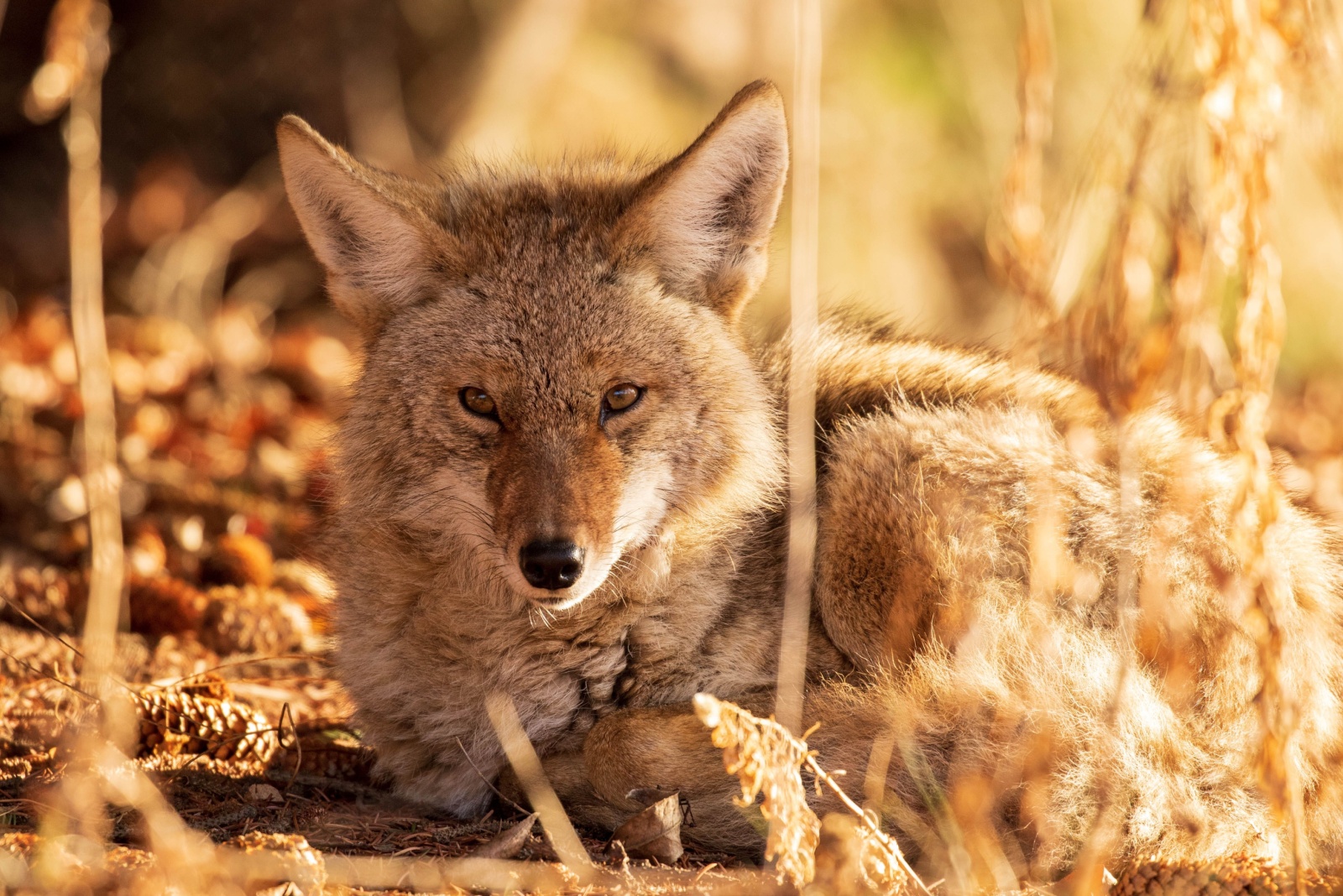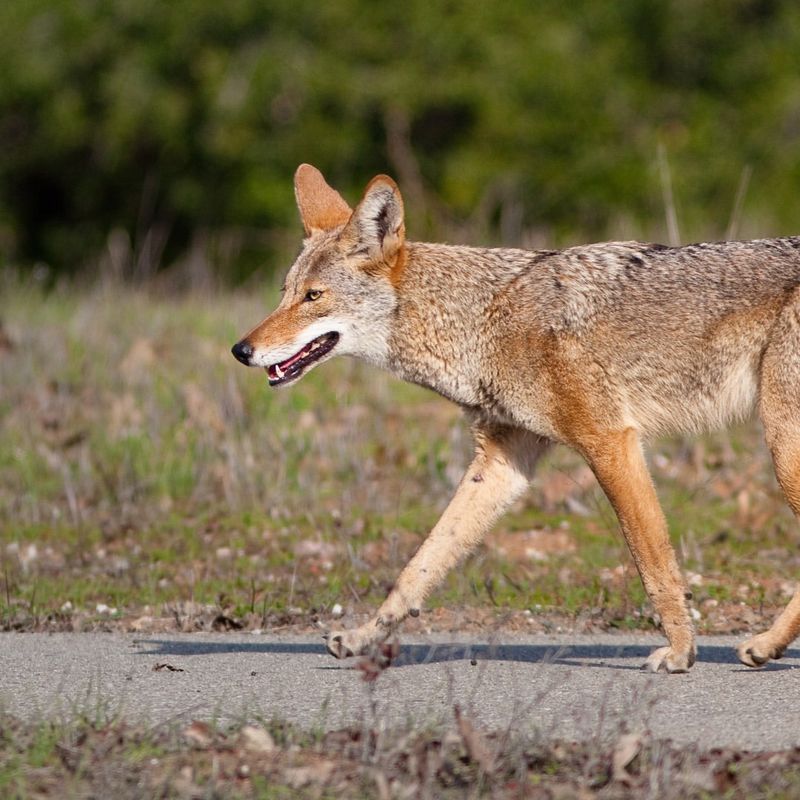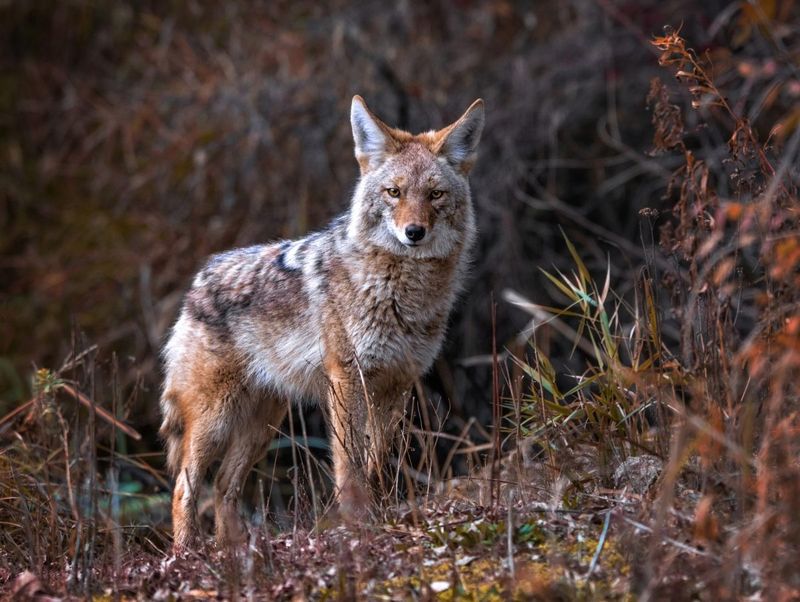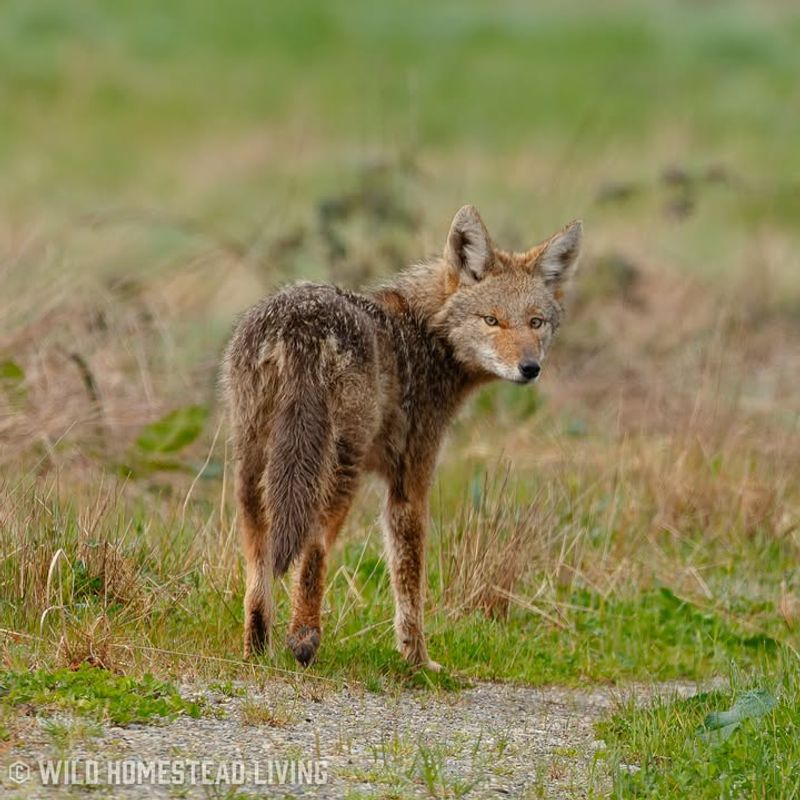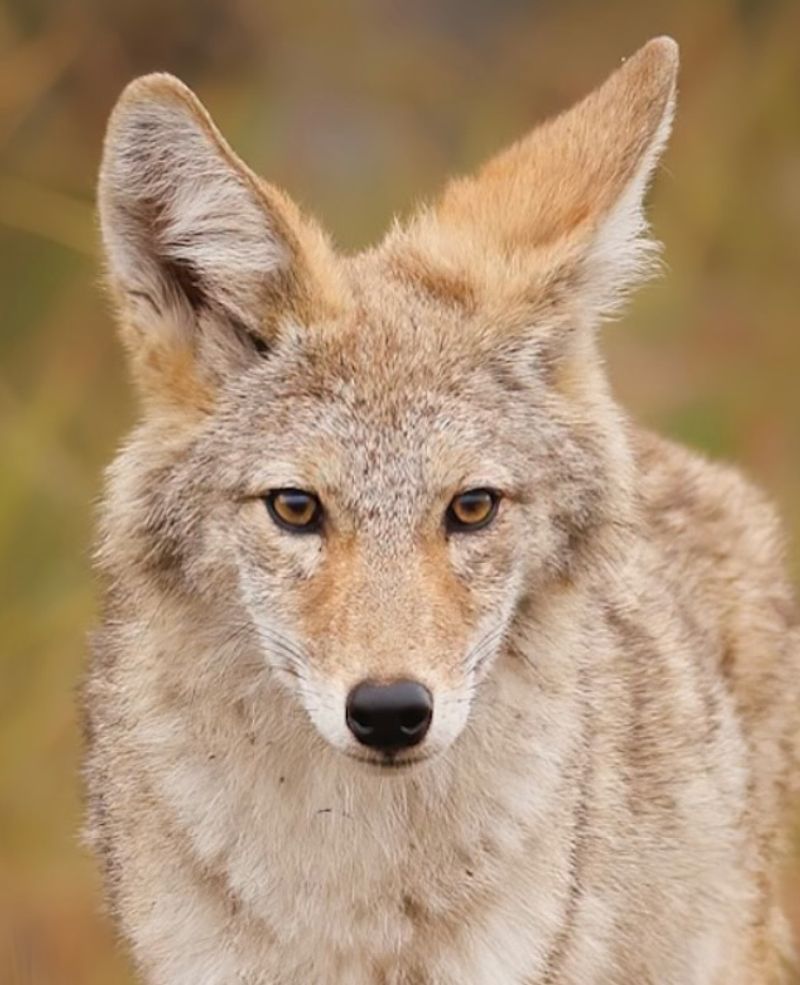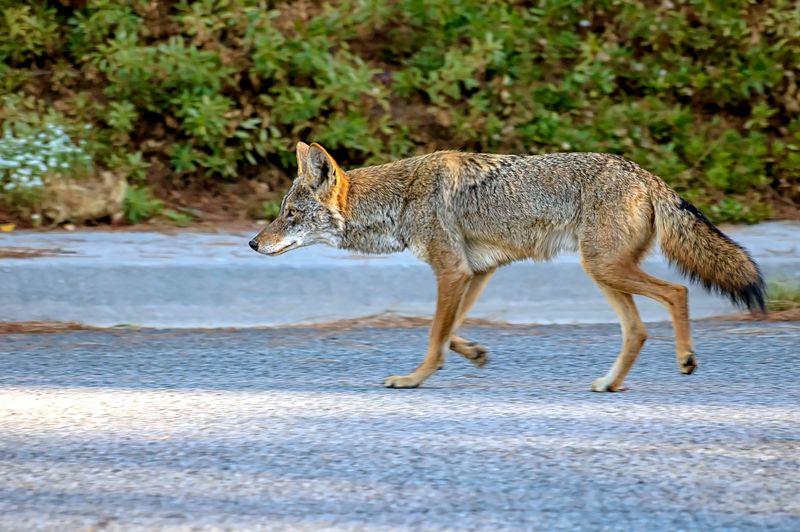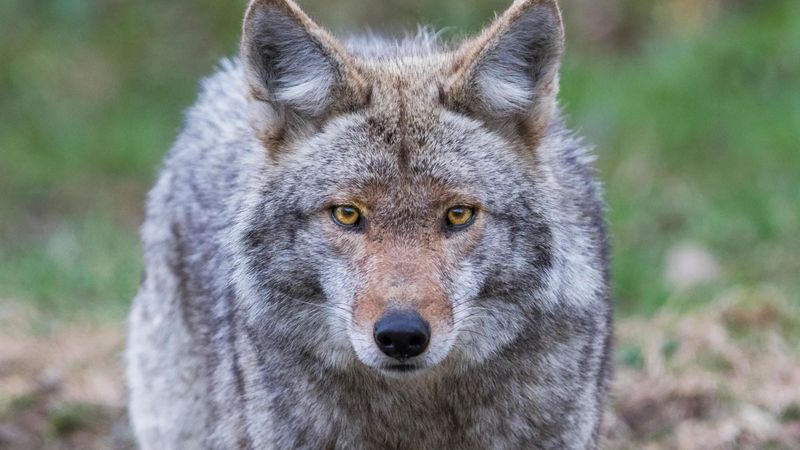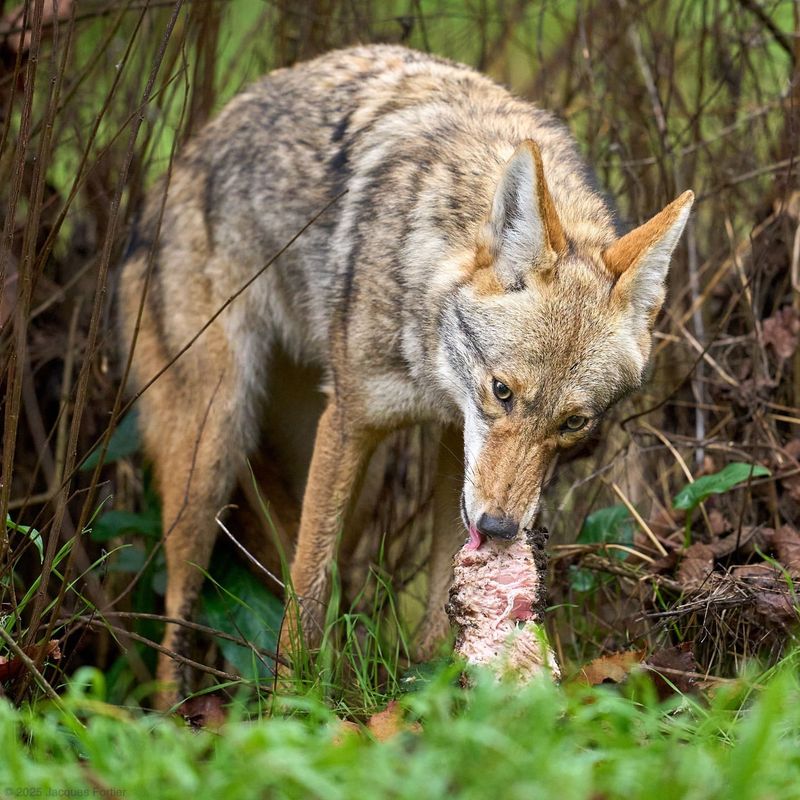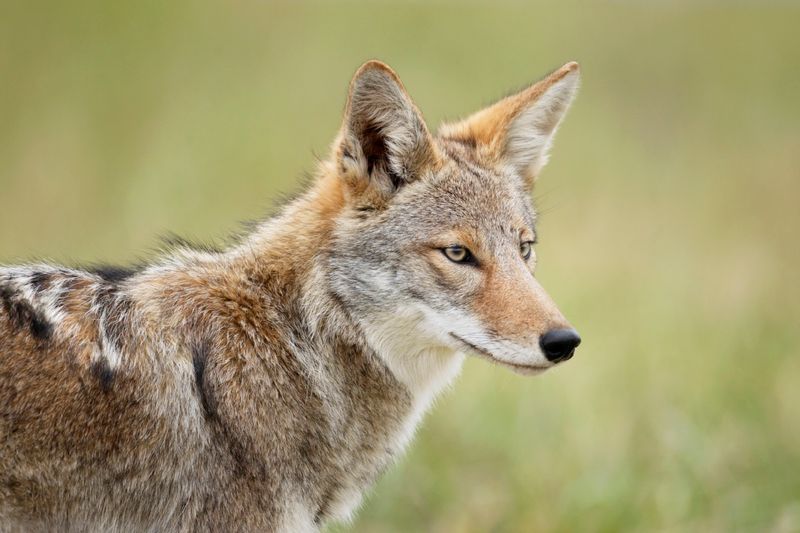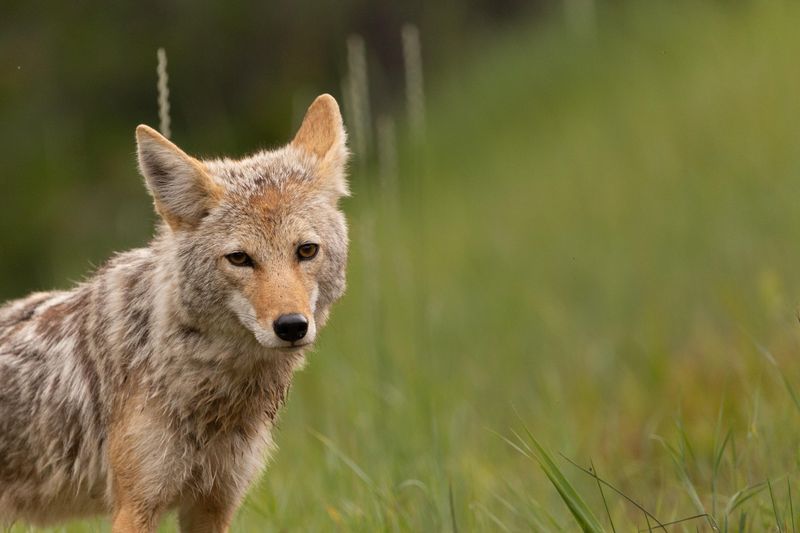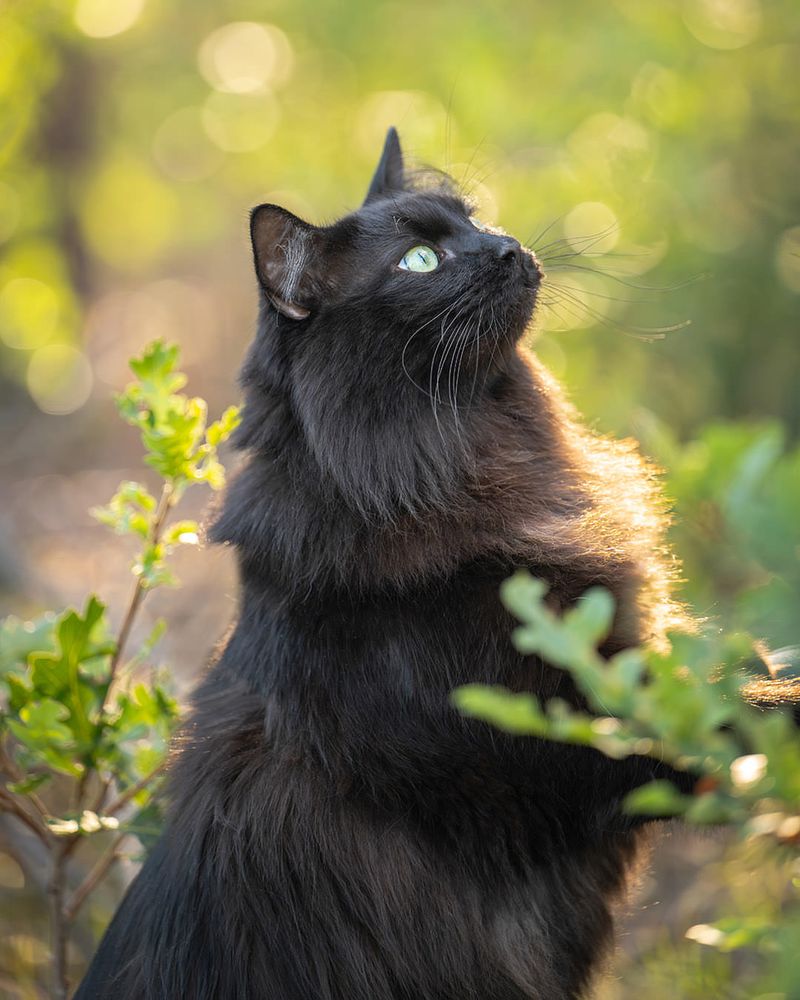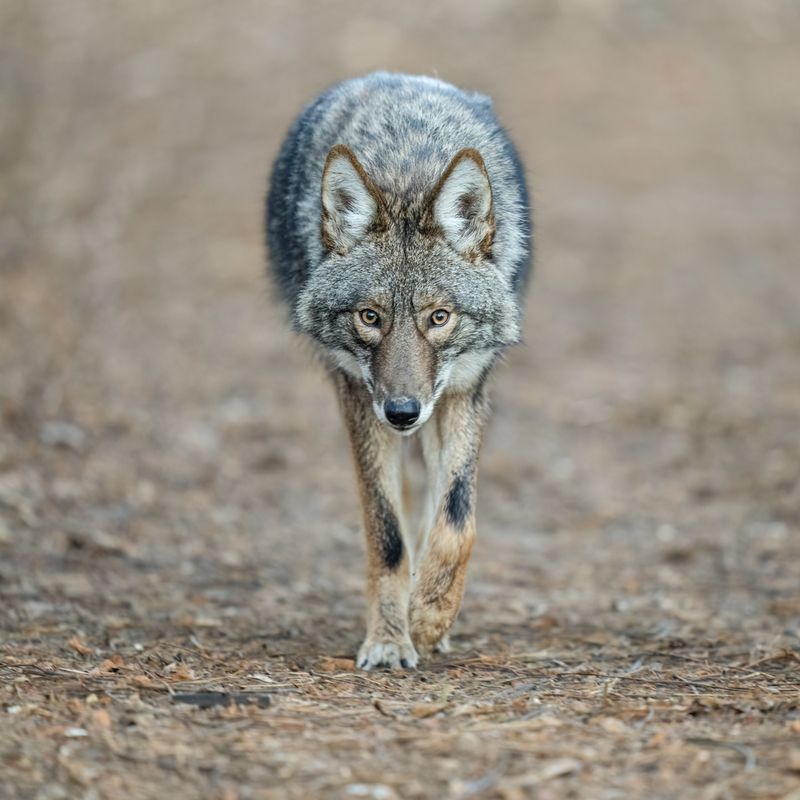Spotting a coyote in your Idaho yard can stop you in your tracks. One moment you’re sipping coffee on the porch, and the next, a pair of golden eyes is watching from the edge of the trees.
Coyotes are part of Idaho’s wild fabric—but knowing how to respond makes all the difference between peaceful coexistence and an unwanted problem. A few smart moves (and a few mistakes to avoid) can keep everyone—human, pet, and coyote—safe.
1. Make Yourself Look Big And Intimidating
Coyotes typically fear humans, but they need reminders that we’re not easy targets. Stand tall, spread your arms wide, and wave them above your head to appear larger than you actually are.
Puff out your chest and take a confident stance. This posture signals dominance and can convince the coyote to back off.
Never crouch down or make yourself smaller, as this might encourage the animal to approach rather than retreat from your Idaho property.
2. Make Loud Noises To Startle The Coyote
Startling a coyote with sudden, loud sounds can quickly send it running. Yell firmly, clap your hands together forcefully, or bang pots and pans if you have them nearby.
Whistles, air horns, and even shaking a can filled with coins work wonderfully. The goal is creating an unpleasant experience so the coyote associates your Idaho yard with danger.
Consistent noise-making teaches coyotes that humans are threats, not potential food sources or easy marks to intimidate.
3. Throw Objects Near (Not At) The Coyote
Tossing small rocks, sticks, or other harmless objects in the coyote’s direction—without actually hitting it—reinforces that your space is off-limits. Aim for the ground near the animal to create noise and movement.
This technique is called hazing, and wildlife experts recommend it for teaching coyotes to fear humans. You’re not trying to injure the animal, just make it uncomfortable enough to leave.
Keep a bucket of small stones by your door during coyote season for quick access.
4. Back Away Slowly While Facing The Animal
If the coyote doesn’t immediately flee, begin moving backward toward safety while keeping your eyes on the animal. Never turn your back or run away, as this can trigger a chase instinct.
Move deliberately and calmly, maintaining that intimidating posture you established earlier. Running signals weakness and might encourage the coyote to pursue you or feel emboldened.
Continue making noise and acting large as you create distance between yourself and the wild animal in your Idaho yard.
5. Bring Pets And Children Inside Immediately
Small pets and young kids can look like prey to a hungry or curious coyote, so getting them indoors is your top priority. Call them calmly but urgently to avoid creating panic that might attract more attention.
Scoop up small dogs or cats if they’re close enough. Coyotes have been known to jump fences to reach unattended pets, especially during dawn and dusk hours.
Once everyone’s safe inside, you can focus on scaring the coyote away without worrying about vulnerable family members.
6. Spray The Coyote With A Hose
A strong blast of water from your garden hose creates an effective, harmless deterrent that most coyotes dislike intensely. Aim the stream directly at the animal to make it uncomfortable and encourage a quick departure.
Water doesn’t harm the coyote but delivers a clear message that your property isn’t welcoming. This method works especially well if you spot the animal before it gets too close.
Keep your hose easily accessible during months when coyote sightings increase in your Idaho neighborhood.
7. Report The Sighting To Idaho Fish And Game
Idaho Fish and Game tracks wildlife encounters to identify problem animals and patterns in your area. Reporting your sighting helps them monitor coyote populations and determine if intervention is needed.
Provide details like the time of day, the coyote’s behavior, and whether it seemed sick or unusually bold. Frequent sightings in residential areas sometimes indicate a food source attracting them.
Your report could protect neighbors who might not know how to handle these encounters safely and effectively.
8. Remove Food Sources From Your Yard
Coyotes visit Idaho yards that offer easy meals like unsecured garbage, pet food left outside, or fallen fruit from trees. Eliminating these temptations makes your property far less attractive to hungry wildlife.
Store trash in containers with tight-fitting lids and bring pet dishes inside after feeding time. Clean up birdseed spills, as these attract rodents that coyotes hunt.
Compost bins should be secure and properly managed. A clean yard means coyotes will move along to find food elsewhere instead of returning.
9. Never Try To Feed Or Befriend The Coyote
Feeding wild coyotes is dangerous and often illegal, as it eliminates their natural fear of humans. A fed coyote becomes a bold coyote, and bold coyotes pose serious risks to pets, children, and even adults.
Some people mistakenly think they’re helping a hungry animal, but they’re actually creating a neighborhood hazard. Coyotes that associate humans with food may become aggressive when meals aren’t provided.
Wildlife belongs in the wild, not dependent on handouts that alter their behavior and endanger your Idaho community permanently.
10. Don’t Turn Your Back And Run Away
Running away from a coyote can trigger its predatory chase instinct, turning a cautious animal into an aggressive pursuer. Your sudden movement signals that you’re prey rather than a threat.
Coyotes are incredibly fast runners, reaching speeds of 40 miles per hour, so you won’t outrun one anyway. Turning your back also prevents you from monitoring the animal’s behavior and responding appropriately.
Stand your ground, face the coyote, and back away slowly instead of fleeing in panic from the situation.
11. Never Leave Small Pets Outside Unattended
Coyotes view small dogs and cats as prey, not fellow animals to respect or avoid. Leaving them outside alone, especially during dawn, dusk, or nighttime, puts them in serious danger.
Even fenced yards aren’t always safe, as coyotes can jump surprisingly high barriers when motivated by hunger. Attacks happen quickly and often without warning sounds.
Always supervise outdoor time for small pets in areas with coyote activity. A few minutes of inattention could result in a tragic and preventable loss.
12. Don’t Assume A Coyote Is Rabid Or Sick
Seeing a coyote during daylight doesn’t automatically mean it’s rabid or diseased. Coyotes are actually active during the day more often than people realize, especially when raising pups or hunting.
True signs of rabies include excessive drooling, stumbling, aggression without provocation, or apparent paralysis. Most coyotes you encounter are simply hungry or passing through your Idaho neighborhood.
Overreacting by calling for the animal to be killed when it’s healthy wastes resources and removes wildlife unnecessarily from the ecosystem.

